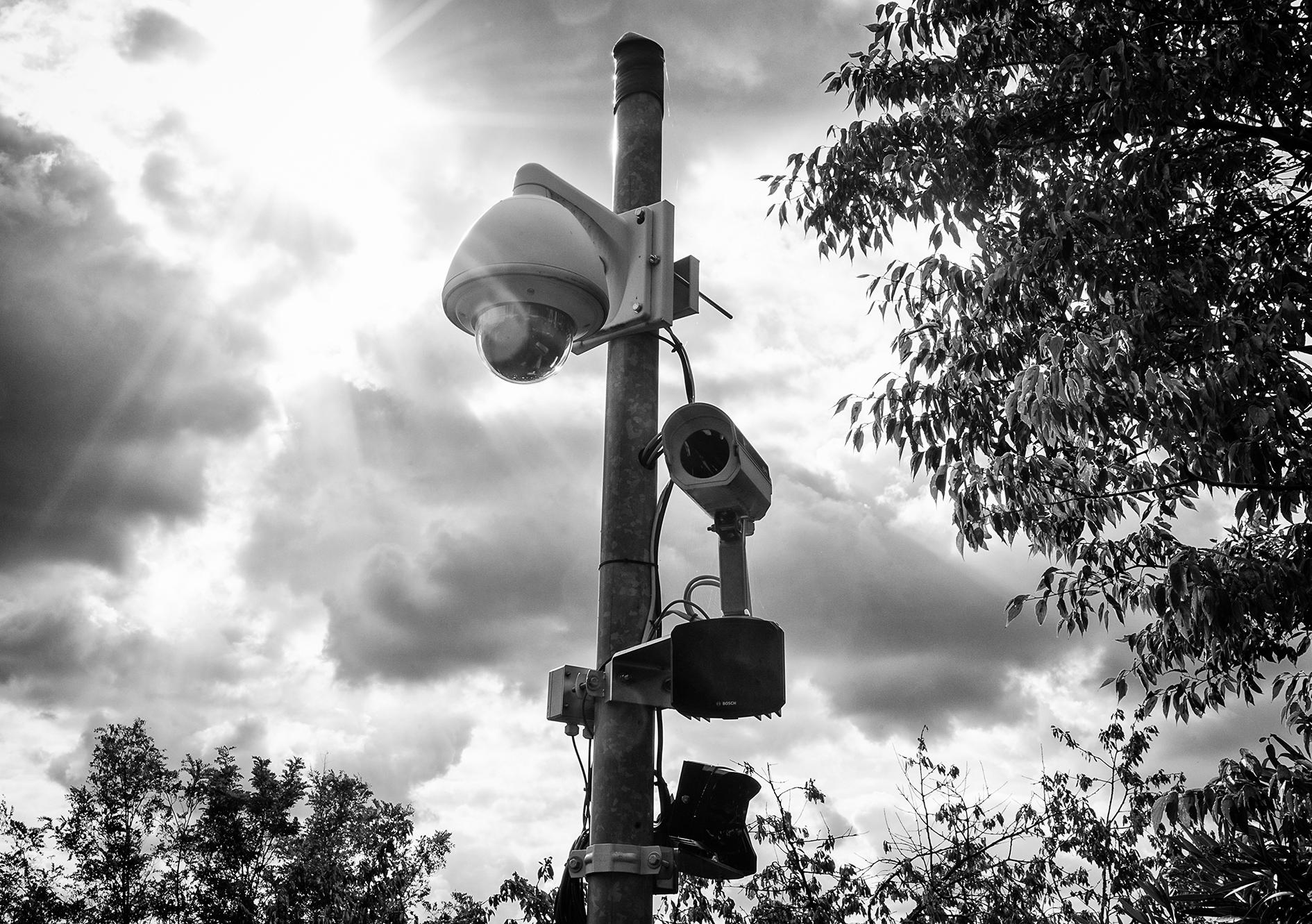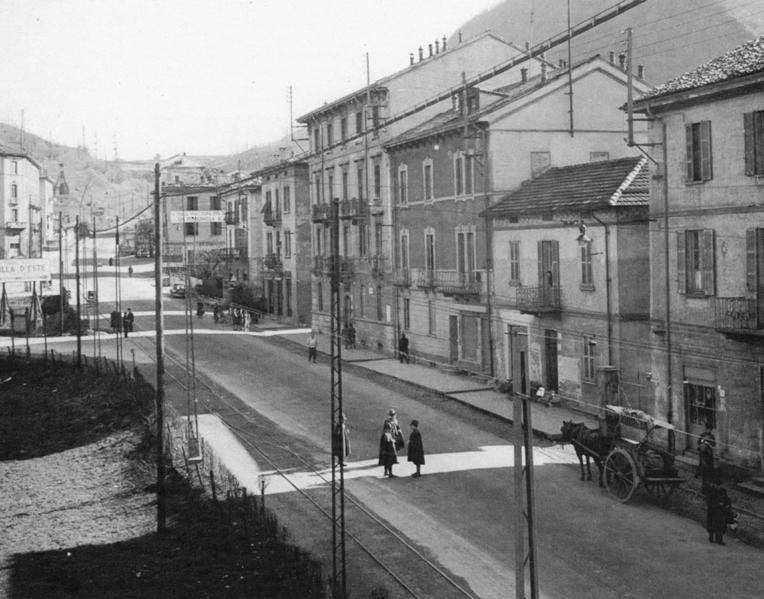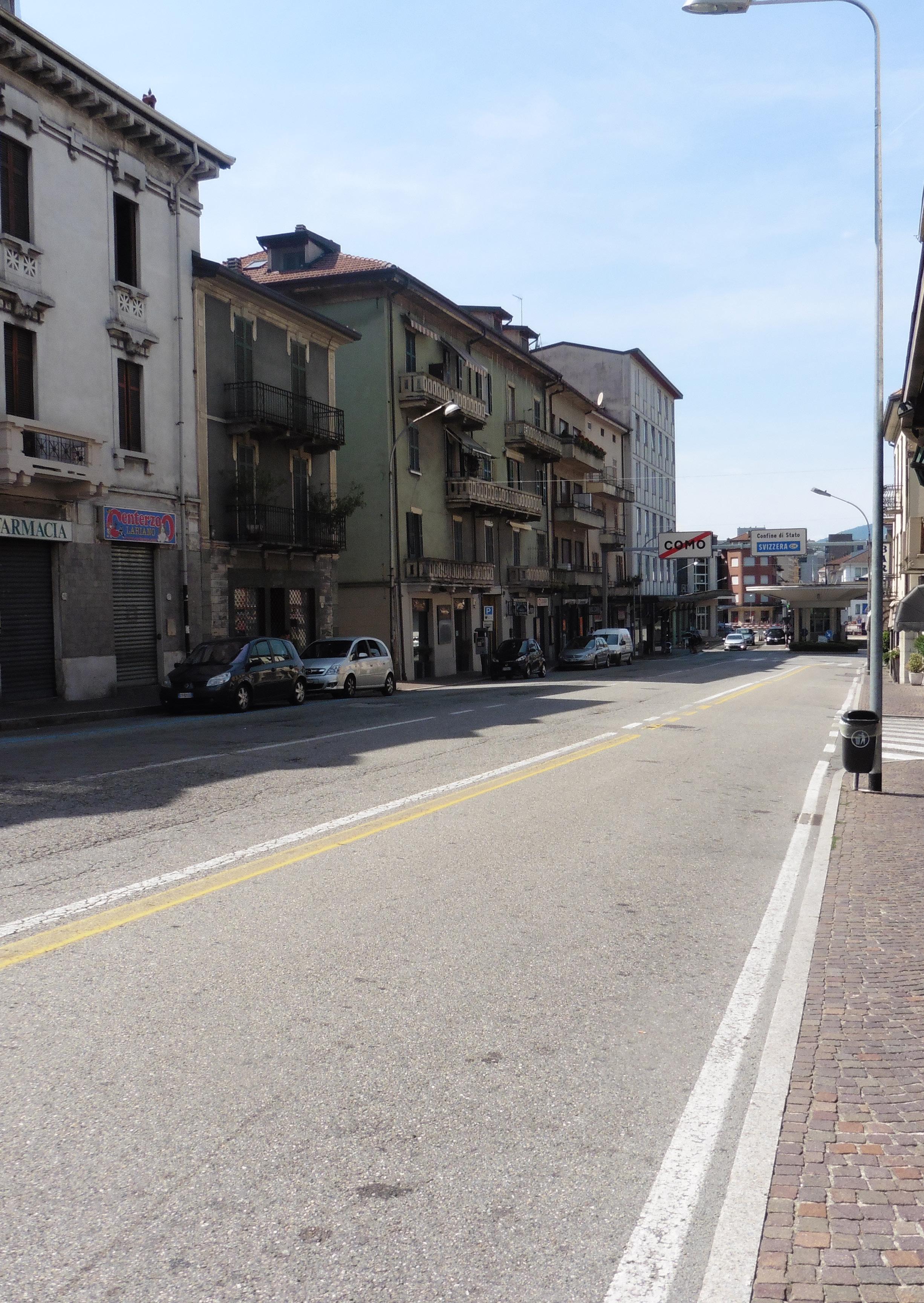
11 minute read
METHODOLOGY
INTRODUCTION
2.1 | Research questions 2.2 | Research aim 2.3 | Expected outcomes 2.4 | Research approach 2.5 | Research methods 2.6 | Methodological flow chart 2.7 | Conceptual framework The methodology chapter makes transparent the research methods that have been used to come to the presented findings.
Advertisement
The chapter presents the research questions, sets out the research aim, the expected outcomes and the way in which the research will be approached to achieve the desired result.
The conceptual framework and methodological flowchart offer a comprehensive overview of the theories consulted and the methods used respectively.
The chapter concludes with a reflection on the societal and scientific relevance of the research and personal, ethical considartions.
2.1 | Research questions
How to design border space that allows the spatial and social mobility of all actors, and that functions as an integrative edge for people from different backgrounds? SQ1. What are the impacts of the various forms of spatial mobility on border space?
SQ2. How can planning and design in border space be adapted to do justice to cross-border lifestyles? What cross-border networks are at stake?
SQ3. What are the spatial consequences of the presence of a nation-state border?
SQ4. What kind of urban design interventions could contribute to making border space an inclusive and inhabitable space?
SQ5. How can refugee integration be stimulated through interventions in urban form?
SQ6. How can the dynamics of permanence and temporality inherent to border space be addressed by design?
Figure 9 Security cameras at the SwissItalian border (August 2017). By Mattia Vaca. Retrieved from: http://reportage. corriere.it/cronache/2016/ italia-svizzera-con-imigranti-lungo-i-sentieri-deicontrabbandieri/ >
2.2 | Research aim
The aim of this research is to challenge European nation-state territoriality and the corresponding perception that borders are fixed lines that function as an ‘in between’ rather than a space of opportunities. The intention of this project is to reveal that borders are three-dimensional spaces that are more than smoothened spaces of crossing and/or hard barriers. Planning and design should adapt to the idea that a large amount of people actually live in border space, because of the conditions a border creates on both sides. This means border space deserves a planning and design approach that makes more out of border space than a place of the border’s by-products. The aim of this research is to turn border space into a high quality living environment where people of diverse backgrounds have the opportunity to meet. Border space will become a space that is flexible in its adaptation to changing needs of people inhabiting border space.
2.3 | Expected Outcomes
Drawing from extensive literature research, mapping, site visits and interviews, three statements about the meaning and desired direction of border space will form the guidelines along which to develop a design for the border space of Como-Chiasso. The three statements are: (1) borders are defined by movements of people, products and information; (2) border space has overlapping networks and belongs to multiple territories and (3) borders mark changing conditions that have a spatial output. The statements on border space are universal, making the research transferable to other border regions.
Based on the three statements, design principles are developed for the Como-Chiasso border area that would contribute to realizing an inclusive, inhabitable border space. The principles focus on three ‘hows’: (1) how to design affordable, incremental housing, (2) how to design diverse public spaces and (3) how to build slow networks; all in border space. The design principles will in turn inform urban plans, sections and strategic maps on various scales that visualize a potential future for an inclusive, adaptive and ecological Como-Chiasso border area. Two zoom-ins into specific sites along the Como-Chiasso border will be used to represent the ideas guiding this thesis.
2.4 | Research approach
SQ1. WHAT ARE THE IMPACTS OF THE VARIOUS FORMS OF SPATIAL MOBILITY ON BORDER SPACE? The research starts from the personal observation that mobility in the border of Como-Chiasso is unbalanced. Having been part of the intense traffic accross the SwissItalian border, I wondered what the impact of such an amount of traffic could be on space. The research thus starts from a personal experience and takes off from there with a theoretical exploration of the concepts ‘spatial mobility’ and ‘social mobility’. Documentary research and mapping lead me closer to an understanding of the unfair nature of the different movements that occur in border space. It introduces me to a distinction between different border typologies that occur simultaneously, but are experienced differently depending on who you are and where you are from: hard and smooth borders. This brings me to develop a new, desired typology: a slow border.
SQ2. HOW CAN PLANNING AND DESIGN IN BORDER SPACE BE ADAPTED TO DO JUSTICE TO CROSS-BORDER LIFESTYLES? WHAT CROSS-BORDER NETWORKS ARE AT STAKE? Theory research into cross-border planning supports an understanding of how current planning and design is nation-oriented. The written text gives a hint of what nation-transcending planning and design could be like. Theory research into mobility introduces me to the topic ‘cosmopolitanization’ and cross-border lifestyles. The desired border typology transforms from ‘slow border’ into ‘complex border’.Spatial analysis and mapping is used to visualize the different cross-border networks. The different user groups in border space are reduced to four typical users that frequent the Como-Chiasso border: (1) refugees; (2) commuters; (3) transport drivers and (4) commuters.
SQ3. WHAT ARE THE SPATIAL CONSEQUENCES OF THE PRESENCE OF A NATIONSTATE BORDER? Mapping and spatial analysis bring forward the idea of a border as a threedimensional space that currently exists solely of the border’s by-products, but that is actually a daily living environment for many people. Mapping of the so-called ‘border effects’ help to understand the implications of a national border on space. The desired border typology transforms from ‘complex border’ into ‘border space’.
SQ4. WHAT KIND OF URBAN DESIGN INTERVENTIONS COULD CONTRIBUTE TO MAKING BORDER SPACE AN INCLUSIVE AND INHABITABLE SPACE? From the three statements reached after literature research and site visits, design ambitions were generated that are expected to contribute to making the border space of Como-Chiasso into an inclusive, inhabitable space. Research by design has reinformed the design principles, going back and forth between the abstract design of schemes, theory research, consulting design references and precise, measured design on various scales and by various means (maps, sections, 3D, ...).
SQ5. HOW CAN REFUGEE INTEGRATION BE STIMULATED THROUGH INTERVENTIONS IN URBAN FORM? Literature study combined with spatial analysis and research by design gives insight into how adaptations in urban form can influence the social and economic integration of refugees. Different visualisation methods, such as axonometries and eye-level drawings are used to test the spatial quality of such changes.
SQ6. HOW CAN THE DYNAMICS OF PERMANENCE AND TEMPORALITY INHERENT TO BORDER SPACE BE ADDRESSED BY DESIGN? Research by design up until an architectural level reveals the integration of permanence and temporality into the design. Different visualisation methods, such as axonometries and eye-level drawings are tested to get a grip on what the dynamic character of border space actually looks like.
EXPLORATORY RESEARCH Helps to identify a problem or question
SITE VISIT Getting to know the area by inhabiting it for half a year has been the first step to identify the question of this thesis.
DOCUMENTARY RESEARCH Documentary research is made use of by consulting documents such as newspapers, maps, government statistical publications and photographs to identify problems in border space. The documentary research helps to identify the scope and indicate the first direction of the research.
MAPPING AND SPATIAL ANALYSIS Mapping of the areas in which exclusion and privilege prevail helps to understand how and if these phenomena mean something spatially. Spatial analysis of the produced maps results in recognized structures and recurring spatial elements that are inherent to border space and mobility.
CONSTRUCTIVE RESEARCH Tests theories and proposes solutions to a problem or question
THEORY RESEARCH The analysis of scientific papers on the themes of mobility, border space and nation-state territoriality help to identify established opinions in the field and shape a personal position on the subjects studied.
DESIGN REFERENCE ANALYSIS The analysis of executed designs provides the research with ‘proof’ from practice. Reference analysis is a strong addition to theory analysis, because it can ground the abstract theories.
EMPIRICAL RESEARCH Tests the feasibility of a solution using empirical evidence
FIELD WORK Site visits for personal observation of the situation helps the designer to grasp reality. Consulted theories and imagined designs need to land in reality. Field work is crucial in order for the designer to understand the scale and possibilities of the site, as well as to get an idea of the use of spaces.
INTERVIEWS Face-to-face interviews or online conversations with people who live in the selected site are valuable to offer an insider perspective. Within the scope of this project, I have spoken to refugees, inhabitants and employees in the area and volunteers who have worked with refugees.
DIAGRAMATIC DESIGN Designing in diagrams helps to explore concepts and helps to understand how complex themes can work together in space. Diagramatic design can happen in the form of schematic maps, but also in sections, in collages or in scaleless schemes.
SITE-SPECIFIC DESIGN The integration of concepts and ideas into measurable space through sitespecific design tests helps to understand how concepts could work spatially.
research questions
SQ1. What are the impacts of the various forms of spatial mobility on border space?
SQ2. How can planning and design in border space be adapted to do justice to cross-border lifestyles? What cross-border networks are at stake?
SQ3. What are the spatial consequences of the presence of a nation-state border?
SQ4. What kind of urban design interventions could contribute to making border space an inclusive and inhabitable space?
SQ5. How can refugee integration be stimulated through interventions in urban form?
SQ6. How can the dynamics of permanence and temporality inherent to border space be addressed by design? SITE VISIT DOCUMENTARY RESEARCH MAPPING AND SPATIAL ANALYSIS THEROY RESEARCH REFERENCE ANAYSIS FIELD WORK INTERVIEWS DIAGRAMATIC DESIGN SITE-SPECIFIC DESIGN
How to design border space that allows the spatial and social mobility of all actors, and that functions as an integrative edge for people from different backgrounds?
SUBQUESTIONS
SQ1. What are the impacts of the various forms of spatial mobility on border space?
SQ2. How can planning and design in border space be adapted to do justice to cross-border lifestyles? What crossborder networks are at stake?
SQ3. What are the spatial consequences of the presence of a nation-state border?
THREE OBSERVATIONS AIMS
1. To define inclusive mobility as a form of capital that creates accessible opportunities in border space.
2. To explore how spatial mobility can be designed and planned inclusively.
3. To explore how planning and design could adapt to global cosmopolitanization of lifestyles.
4. To define and map the cross-border networks that are at stake.
TOWARDS A BORDER SPACE DESIGN
ZOOM-INS SQ4. What kind of urban design interventions could contribute to making border space an inclusive and inhabitable space?
SQ5. How can refugee integration be stimulated through interventions in urban form?
SQ6. How can the dynamics of permanence and temporality inherent to border space be addressed by design? 5. To explore and graphically represent the effects of borders on surrounding space and inhabiting local and floating populations.
6. To use research by design as a way to study how to build affordable incremental housing, diverse public spaces and inclusive slow traffic networks.
7. To develop an urban design method that fosters the integration of refugees in central urban areas.
8. To determine how the dynamic nature of borders can be addressed.
Documentary research
Theory research
METHODS
Mapping
Field work
Interviews Reference analysis
Diagramatic design
Site-specific design
THEORIES
Beck, U. (2004). Mobility and the Cosmopolitan Society.
Kaufmann, V. et al. (2004). Motility: Mobility as Capital.
Urry, J. (2004). The New Mobilities Paradigm.
Bergmann, S. et al. (2014) Spaces of Mobility.
Balibar, E. (2004) We, the people of Europe?
Bauman, Z. (2018). Between separation and integration: Strategies of cohabitation in the era of diasporization and Internet.
Beck, U. (2004). Mobility and the Cosmopolitan Society.
Faludi, A. (2018). The Poverty of Territorialism.
Agier, M. (2016). Borderlands.
Tsianos, V. (2010) Transnational Migration and the Emergence of the European Border Regime
Sennett, R. (2019). Building and Dwelling: Ethics for the City.
Sim, D. (2019) Soft City.
Soja, E. (1996) Thirdspace.
Boano, C. & Astolfo, G. (2020) Notes around hospitality as inhabitation.
Katz, I. (2017) Between Bare Life. and Everyday Life: Spatializing Europe’s Migrant Camps.
defintion
Definition inclusive mobility in border space
Definition cosmopolitan planning
Definition border space
Definition inclusive urban design
Definition refugee hospitality
Definition dynamic borders
OUTCOMES
design steps design results
Infrastructure analysis Slow traffic concept regional scale
Cross-border network analysis Network concept regional & city scale
Border space analysis Concept how to revalue border space qualities - city scale
Spatial translation of inclusive urban design to design principles
Spatial translation of refugee needs to local scale design
Spatial translation of dynamic border to local scale design Design principles
Affordable housing, public space & slow traffic strategy - city scale
Design Refugee Community - local scale
Design Customs Park - local scale


context
ideology
paradox
definition GLOBALIZATION TERRITORIALIZATION
COSMOPOLITANISM
“living in mobility” NATIONALISM
“us versus them”
interdependence MOBILITY
exclusion BORDERS
privilege
SPATIAL MOBILITY
SOCIAL MOBILITY
HARD BORDERS SMOOTH BORDERS
aim INCLUSIVE SPATIAL AND SOCIAL MOBILITY SLOW, COMPLEX BORDER SPACE
Figure 10 Above Via Belinzona in Ponte-Chiasso (1939). By Comocomera & Gianfranco Nitti. Retrieved from: < https://www. famigliacomasca.net/comocomera-e-come/>
Figure 11 Below Via Belinzona in Ponte-Chiasso (today). By Comocomera & Gianfranco Nitti. Retrieved from: < https://www. famigliacomasca.net/comocomera-e-come/>

THREE OBSERVATIONS
Drawing from extensive literature research, mapping, site visits and interviews, three statements about the meaning and desired direction of border space can be made that will form the guidelines along which to develop design principles for the border space of Como-Chiasso.








